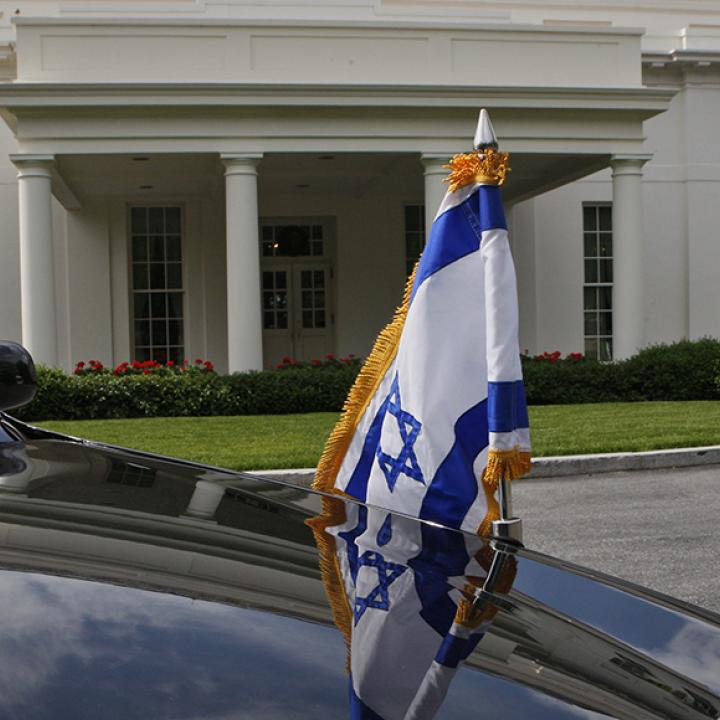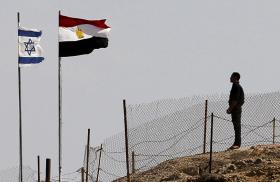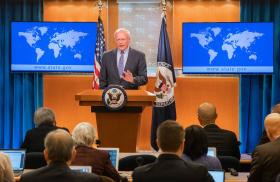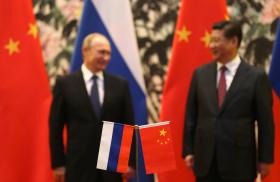
- Policy Analysis
- PolicyWatch 4072
An Opportunity Not to Be Missed: Agenda for the Trump-Netanyahu Meeting

The two leaders should focus on articulating a vision for a diplomatic agreement with Iran, sketching a common roadmap on Gaza, setting the stage for further Arab-Israeli normalization, and updating the parameters of bilateral strategic cooperation for a new regional reality.
On July 7, President Trump hosts Israeli Prime Minister Binyamin Netanyahu for their third Oval Office meeting in the past six months. Following U.S. and Israeli strikes on Iran’s nuclear facilities and the subsequent ceasefire, the visit is a crucial opportunity for the two leaders to set the table and transition from military action to political outcomes, capitalizing on Iran’s unprecedented weakness to advance U.S. interests.
On the Agenda
Unfinished business with Tehran is the meeting’s most pressing bullet item. The ceasefire that President Trump imposed on Iran and Israel is vulnerable to cheating. There is no clarity on the definition of violations or the means and methods of enforcement; more important, the ceasefire offered no durable solution to the problems still posed by Iran’s badly damaged nuclear program, its renewed incentive to seek a nuclear weapons capability, and its decision to suspend cooperation with the International Atomic Energy Agency (IAEA). The president has been ambivalent on the need to follow up military action with diplomatic engagement in order to confirm that Iran will not try to reconstitute its “obliterated” nuclear facilities. He has also sent confusing signals that U.S. “maximum pressure” will not apply to Iran’s oil exports.
In Jerusalem, Defense Minister Israel Katz has described a policy that amounts to “aggressive containment” of Iran, suggesting that Israel might prefer to apply the same playbook it has used during the ceasefire with Hezbollah—namely, responding with military force whenever it identifies a suspect site or suspicious activity. Without agreed “rules of the road,” however, this approach could clash with President Trump’s focus on de-escalation.
The major military achievements against Iran’s terrorist proxy network, missile program, and nuclear facilities will help the two leaders address the second item on their agenda: the festering Gaza conflict. Without progress on that issue, it will be impossible to advance Israel’s integration across the region, especially normalization with Saudi Arabia.
So far, President Trump has not publicly pressured Netanyahu to wind down operations in Gaza or otherwise change course there. In fact, he has provided enormous political and practical support since the start of his second term—he refused to criticize Israel’s decision to suspend food and medical assistance for months; he provided $30 million to fund the Gaza Humanitarian Foundation as an alternative vehicle for aid delivery; and he accelerated military sales and deliveries. He has also eschewed pressuring Israel on policies in the West Bank that could push normalization beyond reach, such as public threats to annex parts of the territory.
The U.S.-Israel relationship itself will be another key agenda item. Trump’s decision to join Israel’s campaign and bomb Iranian nuclear sites—which Israel much preferred to whatever plans it had for addressing the regime’s most hardened targets—represented a historic turning point in a relationship that has been undergoing rapid change since Israel was absorbed into U.S. Central Command’s area of responsibility in 2021, and especially since the Hamas attack of October 7, 2023. The past two years have seen a dramatic shift in Israel’s longstanding security doctrine. Previously, Jerusalem accepted U.S. support but also insisted on the principle of “defending itself by itself.” In the new strategic reality, however, Israel relied on a U.S.-led coalition to counter Iran’s missile and drone attacks in April 2024, then worked directly with the United States in an offensive military coalition to achieve their shared goal of massively damaging Iran’s nuclear program. With change happening so quickly—in the bilateral relationship, in the capabilities of regional partners, and in the decimation of their shared adversary Iran—the two leaders will need to start talking about how U.S. support should evolve to reflect this emerging reality, including high-priority discussions on how to replenish Israel’s stockpile of antimissile interceptors.
Recommendations for the U.S. Approach
Given that Iran and its regional proxy network have reached a moment of peak vulnerability, now is the time for the United States to press its advantage and lock in diplomatic achievements that reflect this power imbalance. President Trump can kickstart this process by gaining Netanyahu’s agreement on a common path forward regarding top regional priorities. These include:
Articulating the U.S. vision for a diplomatic agreement with Iran. Under such an agreement, Tehran should be required to confirm that any residual nuclear program is solely for peaceful purposes by forswearing enrichment, sending any remaining enriched uranium out of the country, and agreeing to intrusive international inspections. The United States should also press for limits on Iran’s production and export of ballistic missiles, drones, and related components, among other restrictions.
To facilitate these goals, the president can point to his broad sanctions relief in Syria as a demonstration of his readiness to relieve Iran’s economic pressure once the regime does what is necessary to dispel concerns about its intentions and capabilities. In the meantime, he should affirm that any Iranian effort to reconstitute the nuclear program could trigger additional U.S. military strikes; indeed, a second round of strikes would be an even more instructive lesson about U.S. determination than the first round.
Sketching a common roadmap to deliver long-term security for Israel. Trump and Netanyahu should discuss a series of diplomatic arrangements that build on Israel’s impressive post-October 7 military achievements against Hamas, Hezbollah, Iran, and other adversaries. Saudi normalization, an expanded disengagement/non-belligerence accord with Syria, and even a framework for peace with Lebanon are all possible, but they will remain elusive until the Gaza conflict is resolved and Israel allays fears about potential unilateral annexations in the West Bank.
The first step should be a U.S. push to end the Gaza war, with a focus on releasing all Israeli hostages, exiling key Hamas leaders, and implementing a phased Israeli military withdrawal to Gaza’s periphery. These steps would open the door to deploying a joint Palestinian and Arab security presence that has the formal blessing of the Palestinian Authority and is tasked with collecting Hamas weapons, securing and delivering humanitarian aid, and setting the framework for a post-Hamas future. Trump also should make a clear statement about his expectations for the way ahead in the West Bank, noting U.S. opposition to any Israeli annexation of West Bank territory outside of agreements with the Palestinians.
In addition to demanding Israeli action, the president should make substantial “asks” of Arab leaders. For example, Egypt and Qatar need to exert pressure on Hamas’s external leadership to accept these terms, while Saudi Arabia, the United Arab Emirates, and other states should use their influence to prepare for a new Arab role on Gaza and proactively engage the PA on serious reforms. Dispatching Secretary of State Marco Rubio and Special Envoy Steve Witkoff to the region immediately following the Trump-Netanyahu meeting would send a message that the United States is counting on Arab leaders to do their part.
Launching the serious work needed to define the parameters of U.S.-Israel strategic cooperation in the post-Iran strike era and, separately, the future of U.S. assistance. Talks should start soon on a new memorandum of understanding regarding the future of U.S. military assistance. Toward that end, the president should direct the Pentagon to assess Israel’s current missile defense needs, and engage Congress on the urgency of rapidly replenishing the interceptors that defended Israeli territory and citizens from Iranian and proxy attacks. Apart from the MOU, situations in which U.S. forces essentially complete Israeli operations should be a rare occurrence—the partnership’s new parameters need to reflect the understanding that Israel will take the lead on its own operations, while closely consulting with Washington in all such scenarios given the risk to U.S. forces and assets in the region.
Dana Stroul is the Kassen Senior Fellow and director of research at The Washington Institute and former deputy assistant secretary for the Middle East at the Pentagon. Robert Satloff is the Institute’s Segal Executive Director and Howard P. Berkowitz Chair in U.S. Middle East Policy.




